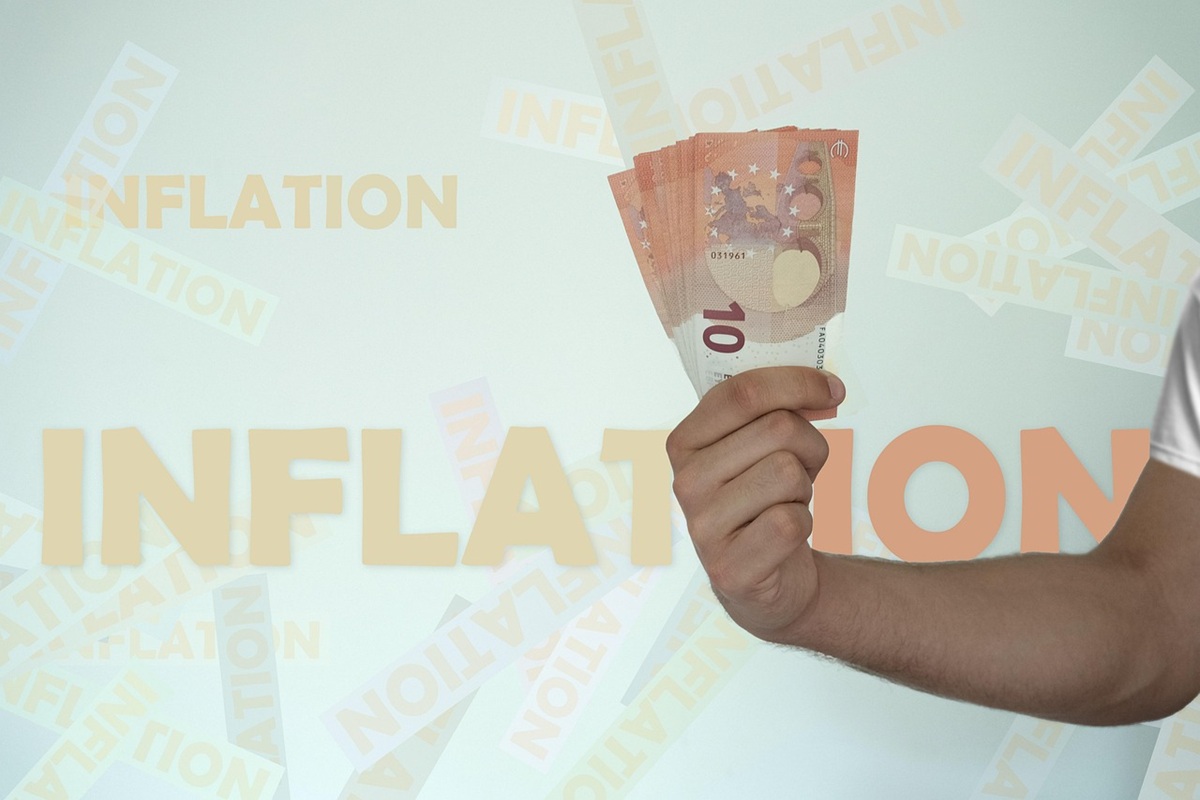In the eurozone, inflation continues to move along a downward trajectory, gradually approaching the European Central Bank’s target of 2%.

The mentioned dynamic is observed at a time when European financial authorities are considering whether to make decisions on further interest rate cuts and what pace of implementation of the relevant process is most appropriate, if necessary.
In March, consumer prices in the eurozone rose by 2.2% year-on-year. In February, the corresponding indicator increased by 2.3% compared to the figure for the same period in 2024.
Information on the inflation rate was published on Tuesday, April 1, by Eurostat. It is worth noting that this data coincided with the consensus forecast of economists surveyed by the media.
Services inflation, which policymakers pay special attention to, was recorded in March in the eurozone at the 3.4% mark. In February, this figure was 3.7%. At the same time, underlying price pressures slowed to 2.4%. This decline turned out to be more intense than the consensus forecast of economists surveyed by the media suggested.
In just over two weeks, the European Central Bank will decide on monetary policy. In this case, the financial regulator will have to answer the question of whether to lower the cost of borrowing for the seventh time since June. This decision is likely to be difficult. In the relevant context, it is worth noting that there is no unanimous opinion among officials of the European Central Bank as to how serious a threat the tariff policy of the administration of the President of the United States, Donald Trump, is in terms of the impact of this factor on the dynamic of prices.
Last Monday, March 31, the markets pared bets on further easing of monetary policy in the eurozone. These actions were recorded after the media published information that some officials of the European Central Bank doubt the need for ongoing interest rate cuts. Currently, the expectation among investors is that on April 17, the financial regulator will decide on lowering the cost of borrowing. They estimate the corresponding probability at 70%. It is worth noting that until this week, the mentioned indicator was more than 80%.
A greater degree of tentative certainty about the European Central Bank’s further actions in the context of monetary policy is likely to form after Donald Trump announces new tariffs on Wednesday, April 2. Also, the financial regulator has yet to find out what consequences the growth of military spending in the European Union and German investments in infrastructure will have on the state of affairs in the eurozone economic system, which includes 20 countries.
In general, the economy of the mentioned region is currently well on track. Inflation is gradually approaching 2%. Underlying inflation is likely showing a rate of decline that is more intense compared to preliminary expectations. At the same time, interest rates are approaching neutral territory. However, tariffs from the United States may become a factor in a significant negative transformation of this situation. If the most unfavorable scenario in the context of the external impact on the juncture in the eurozone is realized, lowering the cost of borrowing for the European Central Bank will become an inevitable necessity, rather than a question that implies different answers. It is possible that in April, the financial regulator will prefer to summarize the interim results of what happened and how it reacted to the relevant processes. At the same time, such intentions are typical only for some officials of the European Central Bank. This means that the probability of some kind of pause is not the maximum.
The president of the European Central Bank, Christine Lagarde, said last week that 25% US tariffs on imported goods would cause economic growth in the eurozone to decline by 0.3 percentage points in the first year after the relevant measures come into force. Also, in her opinion, the mentioned pace will increase due to retaliatory actions from the European Union. Moreover, Christine Lagarde said that the impact of tariffs on inflation will be far less certain. At the same time, she noted that a weaker euro exchange rate could accelerate price growth by about half a percentage point in the near term.
Not all representatives of the European Central Bank agree with the mentioned point of view, including France’s Francois Villeroy de Galhau, who played down the inflationary impact of tariffs and is more worried about what levies will mean in the context of the effect on gross domestic product (GDP).
At the same time, most officials of the mentioned financial institution have not yet formulated an unambiguous position on the specified matter. Olli Rehn of Finland reinforced that stance last week. During a conversation with media representatives, he said that if data verify the baseline and demonstrate that to achieve the goal of symmetrical inflation of 2% in the medium term, the correct monetary policy response is to cut interest rates in April, an appropriate decision should be made. Olli Rehn also noted that if the data signals something else, the European Central Bank should pause.
The latest quarterly forecasts of the financial regulator provide for a steady return to its price goal in early 2026. This projection is based on the fact that workers’ pay rises continue to abate, despite the tight labor market in the eurozone. A separate release from Eurostat indicates that in February, the unemployment in the mentioned region unexpectedly dropped to 6.1%, which is a record low.
Bank of Spain Governor Jose Luis Escriva said that the latest data on consumer prices in the eurozone reinforce the disinflation process. It was also noted that the 2% price-stability target is approaching.
Returning to the topic of monetary policy, it is worth noting that the European Central Bank adheres to a kind of data-driven approach. This means that the financial regulator makes decisions regarding interest rates based on the indicators of the economic situation relevant at a particular moment, and is not focused on potential probabilities.
The European Central Bank cut its deposit rate from 4% to 2.5% as inflation approaches its 2% target.
Portugal’s Mario Centeno sees no reason to pause the process of lowering the cost of borrowing. At the same time, Austria’s Robert Holzmann believes that the mentioned pause is necessary. Which viewpoint will prevail in the monetary policy decision is not yet known.
As we have reported earlier, EU Readies Plan for Donald Trump’s Global Tariff Strike.









